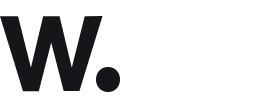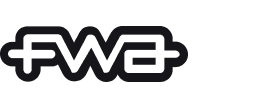Background
A leading lifestyle brand headquartered in the Netherlands, known for its premium home décor, fashion accessories, and sustainable product lines, aimed to expand its global sourcing footprint to meet growing international demand and reduce production costs. The brand sought to set up a sourcing and operations hub in India, leveraging the country’s strong manufacturing capabilities, skilled labor, and diverse supplier base.
While the brand had well-established operations across Europe and Southeast Asia, India was a new territory with untapped potential. To ensure a smooth market entry, a comprehensive market research study, supplier mapping, and an operations handbook were developed.
Challenges
Despite the brand’s global success, several key challenges needed to be addressed to succeed in India:
Limited Local Market Intelligence
The brand lacked on-ground insights into India’s vast supplier ecosystem, regulatory environment, and region-wise manufacturing strengths.Supplier Vetting Complexity
The challenge was not just finding suppliers, but identifying ones that aligned with the brand’s quality standards, sustainability values, and delivery expectations.Operational Ambiguity
With no physical office in India, there was a lack of structured processes, compliance understanding, and logistics workflows needed for sourcing and quality assurance.Cultural & Communication Gaps
Navigating regional languages, negotiation styles, and business practices posed initial barriers for the European sourcing and procurement team.
Solution
A multi-phased approach was implemented to establish a robust sourcing operation in India:
1. Market Research & Supplier Ecosystem Mapping
Category-Specific Regional Research
A detailed market analysis identified the best regions for each product category:
- Home Décor & Soft Furnishings: Jaipur, Panipat, Karur
- Fashion Accessories & Jewelry: Delhi NCR, Jaipur
- Sustainable Textiles & Jute Products: Kolkata, Tiruppur
Cost-Benefit & Benchmark Analysis
Comparative studies on pricing, MOQs, quality, and lead times helped identify competitive advantages of Indian sourcing versus Southeast Asia.
Regulatory Landscape Overview
The research covered customs procedures, import/export laws, and taxation policies, ensuring full compliance.2. Sourcing Strategy & Supplier Onboarding
Supplier Shortlisting & Audits
Over 60 suppliers were identified across categories. Audits were conducted using a defined scorecard covering quality systems, sustainability compliance, capacity, and financial strength.Negotiation Framework
Standardized RFQs, price negotiation templates, and sample evaluation processes were created to ensure transparency and uniformity.Pilot Production Programs
Test orders were executed with shortlisted vendors to assess real-time performance on production, quality, and communication.3. Development of Operations Handbook
SOPs for Sourcing & Procurement
A complete handbook was created covering:Vendor registration and onboarding
Purchase order lifecycle
Quality control protocols
Invoicing and payment cycles
Escalation and dispute resolution mechanisms
Logistics & Shipment Guidelines
Freight forwarding norms, Incoterms, packaging guidelines, documentation formats (BOE, BL, COA, etc.), and HS code classification were documented.Sustainability & Compliance Module
Detailed criteria for ethical sourcing, fair labor practices, and sustainability benchmarks were embedded into vendor contracts and onboarding kits.4. Cross-Cultural Training & Local Liaison Office
Cultural Immersion for European Team
A training module was developed to familiarize the Dutch sourcing team with Indian business etiquette, holidays, and working styles.India Sourcing Office Setup
A local sourcing coordinator was hired in India to manage day-to-day supplier interactions, quality inspections, and order tracking.
Results
Following implementation, the lifestyle brand saw significant gains within the first year:
Cost Reduction
Product sourcing costs were reduced by 22%, mainly due to competitive local pricing and efficient vendor management.Supplier Reliability & Quality Improvement
80% of pilot vendors passed quality inspections and became long-term partners, improving product consistency and reducing defect rates.Speed to Market
Lead times decreased by 30% thanks to streamlined processes and closer regional coordination.Operational Efficiency
The India Sourcing Handbook served as a blueprint for scaling, training new team members, and ensuring uniform procedures across categories.Sustainable Sourcing Recognition
The brand gained recognition for incorporating ethical and sustainable sourcing practices, bolstering its positioning with eco-conscious customers.
Conclusion
This case study illustrates how a structured approach to market entry, research, and operations planning enabled a top-tier Dutch lifestyle brand to successfully expand its sourcing base to India. By combining in-depth market intelligence, hands-on supplier engagement, and robust operational documentation, the company established a scalable and sustainable sourcing framework.
Key Takeaways
Thorough market research is essential to identify category-specific sourcing regions and anticipate regulatory challenges.
A structured operations handbook enables consistency, efficiency, and quality control across sourcing activities.
Pilot programs with defined audit protocols are critical before scaling supplier relationships.
Cultural understanding and local liaison support play a crucial role in successful international sourcing.
Sustainability and compliance frameworks should be embedded from the start to align sourcing practices with brand values.
projects worked
under various capacity
awards & certifications
for various positions
Awarded for excellence, innovation, and leadership.


Design of the Month


Business Consultant of the Month


Let's work on an exciting project together.
Book a free 30 minute consulting session to discuss how I can help your business.

